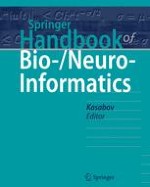2014 | OriginalPaper | Buchkapitel
61. The Brain and Creativity
verfasst von : Francesco C. Morabito, Giuseppe Morabito, Matteo Cacciola, Gianluigi Occhiuto
Erschienen in: Springer Handbook of Bio-/Neuroinformatics
Verlag: Springer Berlin Heidelberg
Aktivieren Sie unsere intelligente Suche, um passende Fachinhalte oder Patente zu finden.
Wählen Sie Textabschnitte aus um mit Künstlicher Intelligenz passenden Patente zu finden. powered by
Markieren Sie Textabschnitte, um KI-gestützt weitere passende Inhalte zu finden. powered by
